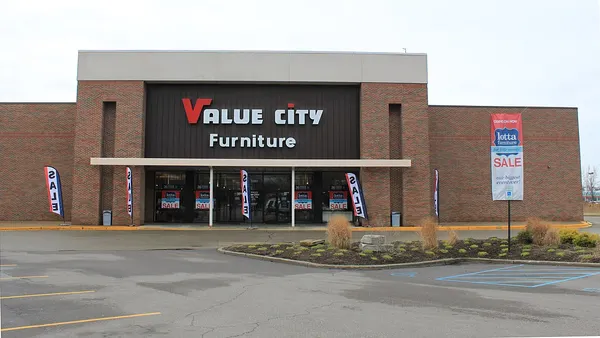Dive Brief:
-
Target recently announced more store openings for the next few years leading up to 2021, according to the retailer’s blog. In November, new stores of various sizes opened in Texas, Florida, California and North Carolina.
-
Target will open at least 18 stores next year, most of them small-format locations averaging between 20,000-30,000 square feet. The locations will open in New York City, Philadelphia, Los Angeles, Columbus and Portland, OR, and in various towns in Florida, Vermont, New York, New Jersey and Massachusetts.
-
In 2019, the retailer plans openings in Miami; Manhattan; Queens, NY; Chicago; and East Lansing, MI. In 2021, it will open a store in Ballston, VA. The company may add more and details regarding the level of services, including curbside pickup, order pickup, mobile pay and CVS pharmacy and Starbucks locations may also change, the company said.
Dive Insight:
In October, Target CEO Brian Cornell said the retailer’s revamp of its store fleet is paying off and the company has decided to remodel 325 more than originally planned — for a total of 1,000 of its 1,800 stores. The remodels and the retailer’s new stores — including a new Herald Square location across from Macy’s famous flagship that opened that month — have helped produce a 2% to 4% sales rise, more than twice a typical store, where sales rose 1.3% last quarter.
The expansion includes Target’s assertive move into New York City and in other urban areas. The retailer is on track to open 28 small-format stores this year, for a total of more than 130 by the end of 2019. Target has also said it will expand same-day delivery services in New York beyond its Tribeca neighborhood pilot to new stores in mid-town, Bensonhurst and Fulton Street in Brooklyn. In the Tribeca neighborhood store, Target’s merchandising is geared to an urban populace and where delivery services include same-day delivery, customers are buying four times more each time they stop in, the retailer said.
Target executives in March unveiled a series of initiatives designed to reverse the big-box retailer’s same-store sales declines, including an investment of more than $2 billion of capital in 2017 and more than $7 billion over the next three years. The company said then that it would use about $1 billion of operating profits this year to improve brick-and-mortar and digital operations.
Stores are also being reconfigured to more efficiently serve as fulfillment hubs for online orders. The new small-format stores, which are between roughly 17,000–50,000 square feet, are aimed at three key markets, urban centers, suburban areas and college campuses.
The fact that Target is increasing its physical presence in New York City as well as expanding delivery there is in contrast to Walmart, which has no locations in New York but is planning free same-day delivery there, according to Walmart U.S. e-commerce chief Marc Lore. Walmart's Jet e-commerce unit already provides the service in New York and, to make that easier, this summer installed "smart locks" in 1,000 apartment buildings there. Latch’s system allows someone to unlock a door with an iOS or Android smartphone, smartcard or special doorcode (or a key). The apps let building managers know when someone arrives at a building, allow them in or provide limited access.
In Silicon Valley, Walmart is also piloting delivery into people's homes, in partnership with Deliv and "smart locks" company August Home. That service resembles Amazon's more widely available "Amazon Key" service. Target is also expanding home delivery, thanks in part to its acquisition in August of same-day delivery service Grand Junction, but so far it hasn't announced plans to deliver beyond the front stoop.














